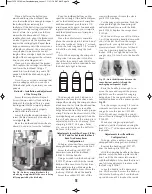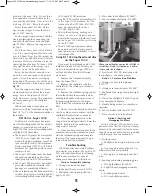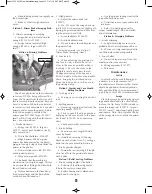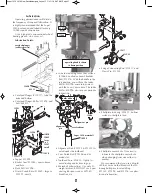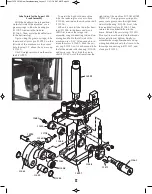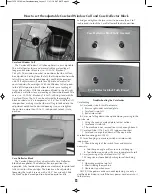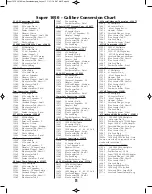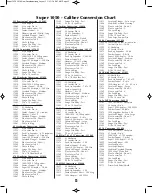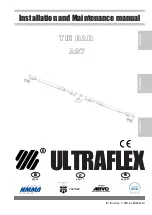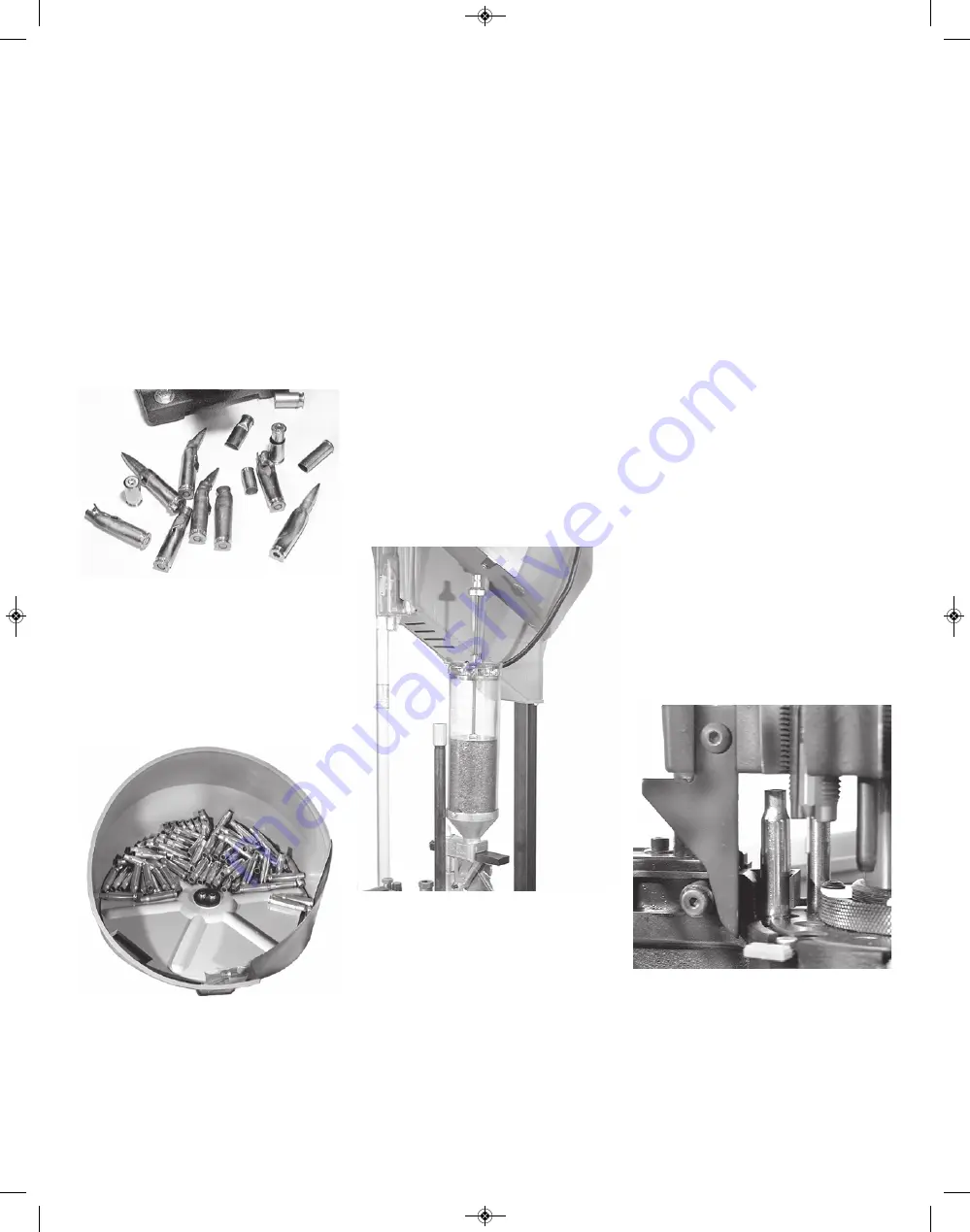
10
place as shown in
Fig. 22
, pull the re-
taining pin and allow the primers to
drop into the magazine. Pivot the switch
the lever back over the Early Warning
System housing. Gently slide the fol-
lower rod down through the switch
lever and into the primer magazine
tube. When you are nearly out of
primers, approximately three remaining,
the follower will activate the buzzer.
The Electric Casefeeder
Use only clean cartridge cases that
have been inspected for any potential
problems; split cases, rocks or smaller
caliber cartridges that may be hidden in
larger caliber cartridges.
Fig 23
Warning:
Be sure that no loaded
rounds are mixed with your empty cases.
It is possible to feed a blunt nosed car-
tridge like a .38 Sp. WC into the
shellplate upside down and explode it
when it is hit by the decap pin.
Now fill the casefeed bowl with ap-
proximately 500 pistol cases or about
350 rifle cases.
Fig 24
Your Super 1050 is now charged with
components and ready to go, but before
you start reloading, read the following
explanation of the sequence of the eight
reloading stations and the processes that
are done at each station.
Review: How the Super 1050
Works
Stations 1 - 8 (counterclockwise)
Station 1:
Empty cases are automati-
cally inserted into the shellplate via the
electric casefeeder.
Station 2:
Here the spent cartridge
cases are resized and deprimed.
Station 3:
This station is totally unique.
The case is supported from the inside
and slightly expanded (not belled) while
simultaneously a swager is driven into
the primer pocket to remove any crimp.
Station 4:
A new primer is installed
at this station. The spring driven primer
slide is extremely smooth. The steel
shrouded primer magazine is capped
with an electronic Early Warning De-
vice to let you know when you’re
down to approximately three primers.
Station 5:
Here the case is belled and
powder is dropped by the case-activated
powder measure. It is extremely accurate
and will not drop powder unless a case
is present. Dillon Precision offers an op-
tional accessory to be utilized with the
automatic powder measure at this station
– Dillon’s Low Powder Sensor provides
an audible and visual reminder when it’s
time to refill the powder reservoir.
Station 6:
This station is open to allow
for case inspection.
Station 7:
The bullet is seated to its
proper depth at this station.
Station 8:
In this station, the bullet is
crimped into place. The cartridge is then
automatically ejected into a collection
bin.
As stated earlier, your dies have been
adjusted at the factory. Before you
change anything, try it the way it is,
once you thoroughly understand the
machine’s operation, make whatever
adjustments to the dies you feel neces-
sary.
Reminder: There may be some varia-
tion due to components.
To Begin Reloading
Turn on the switch on the front of the
casefeed motor housing. The casefeeder
plate should begin to turn. Cases will
begin to dispense, base down, into the
clear plastic casefeed tube. The motor
will continue to run until the tube is full,
at which point a micro-switch will tem-
porarily stop the case flow.
From this point the casefeeder will au-
tomatically fill the tube as you reload. If
the casefeeder does not function prop-
erly or the cases do not fall base down,
refer to the Troubleshooting section of
this manual.
Fig. 24 - The casefeed bowl will hold approx-
imately 500 pistol cases or 350 rifle cases.
Do not overload the casefeed bowl.
Fig. 23 - When loading, use only cleaned and
inspected cartridge cases.
Station 1 - The casefeed plunger inserts the
case into the shellplate.
Fig. 25 - Dillon’s Low Powder Sensor gives
an audible and visual warning when the
powder reservoir gets low.
Super 1050 2018 New Casefeeder.qxp_Layout 1 1/31/18 6:47 AM Page 10


















